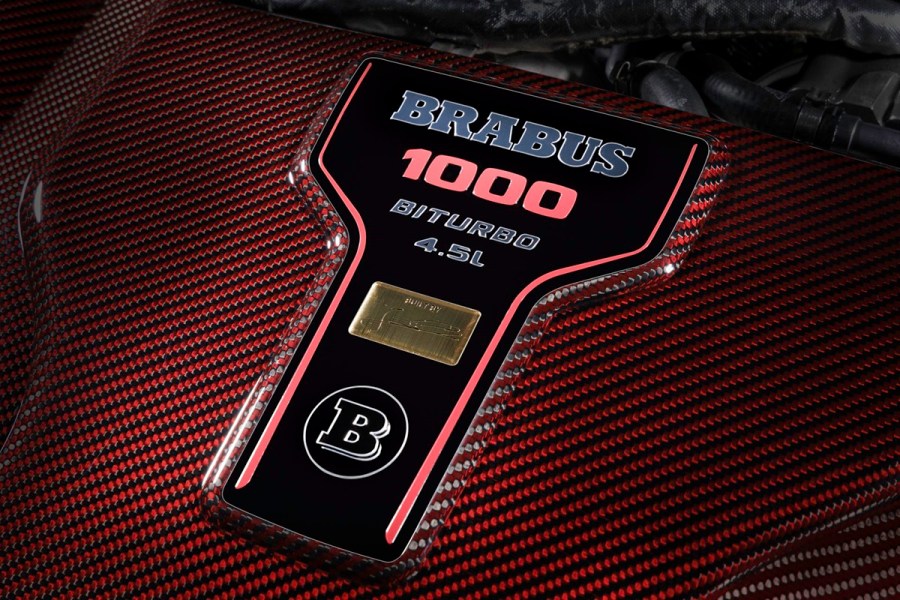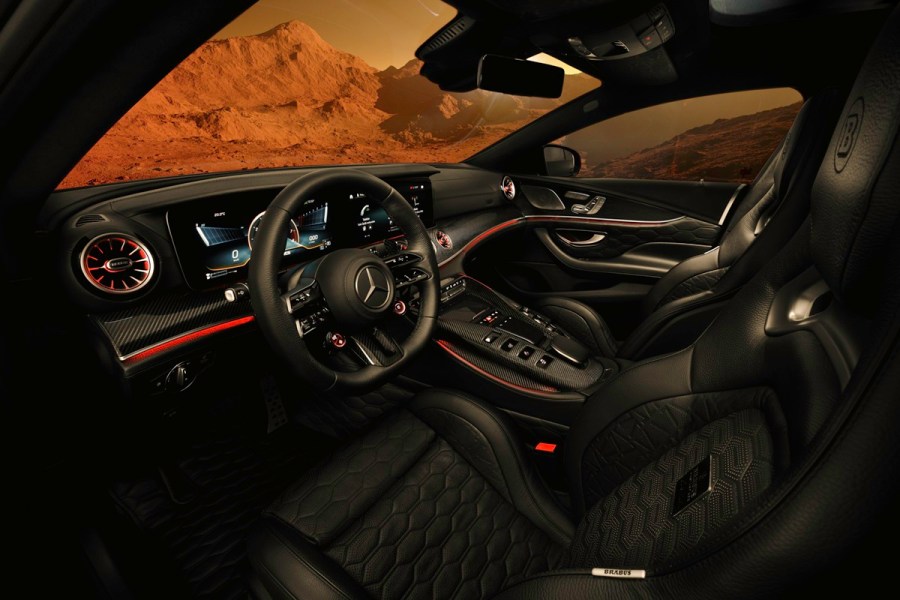The extreme Brabus ‘Rocket’ series has reached new heights with the Brabus Rocket 1000. Here are all the major details.
Fans of the German tuning scene, or just car tuning in general, will be familiar with the Brabus Rocket lineage. Over many years, Brabus has reserved the Rocket moniker for only its wildest, most powerful projects. But, as the car tuning scene has moved on in the past decade or so, there became one thing notably missing from the Brabus line-up: a car which could churn out four figures on a dyno. Well, not anymore. Here’s everything you need to know about the Brabus Rocket 1000.

Brabus Rocket 1000
Ok, look, I know you lot probably want to get straight into the powertrain details, but first let’s take a moment to see what Brabus has done to make sure this executive beast can handle all its grunt.
The Brabus Rocket 1000 is based on the Mercedes-AMG GT 63 S E Performance, which is quite a mouthful of a name, but essentially it’s the four-door version of the AMG GT. In its standard guise, that car already pushes the limits of performance for a vehicle of its size and weight, but Brabus clearly thinks it’s capable of a whole lot more. And anyway, it’s fitting that the company’s first 1000hp car is a four-door Merc; the original Brabus Rocket of 2006 was based on the CLS, which I guess is this new model’s semi-spiritual predecessor.

Aero
Of course, to look at, this is quite obviously no standard Merc. It’s got wider, carbon fenders, plus a carbon splitter at the front. As well as looking mean, that splitter helps to reduce lift over the front axle. Speaking of the front axle, carbon blades within the car’s air inlets help to guide air to (and around) the wheels to help cool the brakes.
Overall, the car should be a bit more planted – it’s 67mm wider, and its air suspension allows for up to 20mm of ride height reduction, which will come in handy at Autobahn speeds.

Powertrain
So, that’s how Brabus intends to keep the Rocket 1000 in check, but how did it reach the 1000hp-mark in the first place? Well, there’s a few steps to solve that puzzle. Stock, the four-door AMG GT produces 639hp, which is an awful lot of power. However, that’s more than 300hp to make up in modifications to reach four figures.
Brabus’ efforts began with increasing the car’s displacement; the engine now has a capacity of just under 4.5 liters, up from the standard 4.0-liter architecture. The twin turbos are new revisions too, set at 1.4 bar. Add that to a reworked exhaust system and map it altogether through some ECU wizardry, and there you have it… 1000 horsepower.

The car has a maximum torque potential of a whopping 1,820 Nm (1,342lb ft), though Brabus has limited the engine electronically to 1,620Nm (1,048lb ft.). “Why is the necessary?”, you ask. Well, if the engine was completely unleashed, you’d get through transmissions quicker than you could say, ‘clutch failure’. A pair of carbon ram air intakes have the job of keeping everything cool.
As for performance figures, you’re looking at 0-62mph in just 2.7 seconds, and an electronically limited top speed of 196mph. Fast enough for ya?
Only 25 of these mega-sedans will make production, each set to cost €450,000 apiece. That’s around $485,000, or £385,000 sterling.
Like what you see? Check out Brabus’ interpretation of a Porsche 911 and a Maybach, next.





